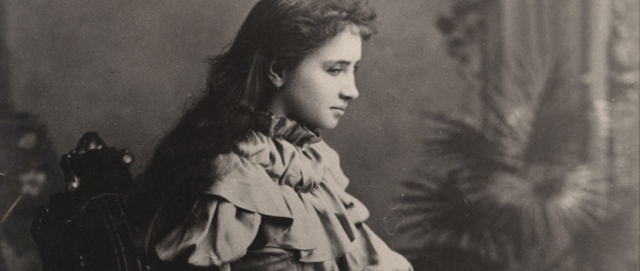Taj Mahal

The Taj Mahal, meaning Crown of the Palace, is an ivory-white marble mausoleum on the south bank of the Yamuna river in the Indian city of Agra.
Taj Mahal was built by Mughal emperor Shah Jahan (reigned from 1628 to 1658). The emperor was first inspired to build the Taj Mahal after he was sick with grief following the death of his third wife, Mumtaz Mahal, while giving birth to their 14th child. His wife was in labor for 30 hours before she died at age 40.
The Taj Mahal was constructed to house the tomb of his favourite wife, Mumtaz Mahal. Later the tomb of Shah Jahan himself was built inside the monument.
The tomb is the centerpiece of a 17-hectare (42-acre) complex, which includes a mosque and a guest house, and is set in formal gardens bounded on three sides by a crenellated wall. One of the Taj Mahal’s most recognizable features is a large white dome that is often called an ‘onion dome’ due to its shape. It has a height of around 35 metres (115 feet) and is surrounded by 4 smaller domes. The full height of the Taj Mahal is 171 metres (561 feet).
The four sides of the Taj Mahal are perfectly identical creating an astonishingly mirrored image on each side. The four minarets (towers) surrounding the Taj Mahal were constructed farther away from the main structure than usual. The minarets also lean slightly outward rather than stand straight. This was done as a safety measure so that if any of them fell, they would fall away from the tomb rather than crash into the central structure.
The Taj Mahal is any obsessive’s dream, with meticulous symmetry across its long and wide diameters. The sole exception to this otherwise uniform aesthetic scheme lies, again, in the gravesite. Mumtaz Mahal’s casket is located exactly at the center of the palace crypt, but it is Shah Jahan’s grave—introduced to the mausoleum following his death in 1666—that rocks its artistic equilibrium with a west-of-center resting place. Shah Jahan’s other wives, and even his favorite servant, were buried in mausoleums just outside of the Taj Mahal. Islamic tradition forbids the decoration of graves. So, Shah Jahan and his wife are actually buried in a plain crypt beneath the main inner chamber of the Taj Mahal.
During British rule in India, the garden was landscaped to look more like the manicured lawns in London, England. The original garden was adorned with lots of roses and daffodils. The Taj Mahal contains a working mosque and is closed on Fridays for prayer.
The calligraphy done over the walls of Taj Mahal are mostly taken from the holy book- Quran Sharif. Apart from the walls of Taj Mahal, the verses are inscribed on the Tomb of Queen Mumtaz Mahal and Emperor Shah Jahan. The tomb contains 99 different names of Allah as calligraphic inscriptions. Lord Curzon’s name is inscribed on a lamp inside the Taj Mahal. The beautiful lamp weighing around 60 kgs is made of copper and is placed under one of the royal gates where the visitors get the first glimpse of the Taj.
With construction beginning around 1632 AD and finishing in 1653 AD, the Taj Mahal took an estimated 22 years to build. Small refinements continued thereafter. The story of arms of artisans being cut-off to make sure that no such monument was ever built again is a hoax as the same man- Ustad Ahmad Lahauri (a Persian from Iran) who was the supervisor of the architect team, laid the foundation of Red Fort too. Instead, historians believe that they were required to sign contracts.
Taj Mahal’s construction cost estimated at the time to be around 32 million rupees, which in 2015 would be approximately 52.8 billion rupees (U.S. $827 million).
The structure on the western side of the Taj Mahal is thought to have been used as a guest house. Over 1,000 elephants were used to transport heavy materials and supplies for construction. A total of 28 types of precious and semiprecious jewels are set in the marble. The marble stones used in the construction were bought from different regions and countries. Out of which the translucent white marble was bought from Makrana, a well-known place for marbles in Rajasthan; Jade & Crystal was imported from China, the Jasper from Punjab, Lapis Lazuli from Afghanistan, Carnelia from Arabia and Turquoise from Tibet. An estimated 22,000 laborers were recruited from all over Asia to contribute to the massive project. Remnants of their massive encampment, bazaar, and living quarters are now a nearby neighborhood.
Earlier, Taj Mahal was to be built in Burhanpur (Madhya Pradesh) where Mumtaz died during the childbirth. But unfortunately, Burhanpur couldn’t supply enough white marble and so the final decision was taken to build the Taj Mahal in Agra. Following the Taj Mahal’s completion, Shah Jahan was put under house arrest in 1658 by his son, Aurangzeb at Agra fort. Shah Jahan was only able to view the Taj Mahal from the window of Jasmine tower (also known as Musamman Burj) for the last eight years of his life before being entombed there.
During the Sepoy Rebellion (Mutiny) of 1857, it is believed that some British soldiers, laid their hands on the precious and semi-precious stones from the walls of the tomb. The Taj was concealed by the ASI (Archeological Survey of India) during World War-II. It was covered with a huge scaffold which made it to appear like stockpile of bamboo. Later once again it took place during the Indo-Pak War in 1971.
The Taj Mahal’s white marble is rapidly turning yellow because of terrible air pollution in Agra. Only electric vehicles are allowed near the structure, and a 4,000-square-mile environmental radius was declared around the monument to help control emissions. Visitors must walk or take electric buses from the parking area to the Taj Mahal. Also, it is forbidden for an aircraft to fly over the Taj Mahal. The Taj Mahal is cracking at an alarming rate due to lack of groundwater beneath the structure. Wooden foundations — once submerged — are thought to be rotting. Even the minarets are beginning to lean more.
In 2008, a Bangladeshi filmmaker constructed a replica of the Taj Mahal at a cost of US $56 million dollars so that his impoverished countrymen in Bangladesh could enjoy the famous monument without traveling to India. The replication took five years to complete with modern equipment. A Taj-inspired luxury hotel, event, and shopping complex is under construction in Dubai. The Taj Arabia, as the replica is called, will be four times the size of the original and will cost an estimated US $1 billion. The 20-story glass hotel will contain 350 luxury rooms.
The grounds are open from 06:00 to 19:00 weekdays, except for Friday when the complex is open for prayers at the mosque between 12:00 and 14:00. The complex is open for night viewing on the day of the full moon and two days before and after, excluding Fridays and the month of Ramadan.
Taj Mahal is one of the most visited and beautiful monuments in India, and attracts over 7-8 million visitors annually. Sometimes there are over 40-50 thousand visitors on one single day to capture the iconic sight of this magnificent building.
The Taj changes its colour depending on the amount of light and time. In the sense, the Taj would appear to be pinkish in the morning, milky white in the evening and golden in the moonlight. Some even believe that this changing pattern of colors depict different moods of a woman. The calligraphy on the Great Gate reads “O Soul, thou art at rest. Return to the Lord at peace with Him, and He at peace with you.
In 2019, in order to address excessive tourism, the site instituted fines for visitors who stayed longer than three hours.
Foreign dignitaries often visit the Taj Mahal on trips to India. Notable figures who have travelled to the site include Dwight Eisenhower, Jacqueline Kennedy, Jimmy Carter, George H.W. Bush, George Harrison, Barack and Michelle Obama, Mark Zuckerberg, Vladimir Putin, Princess Diana and Donald Trump.
Popular myth suggests Shah Jahan wanted to build a black Taj Mahal but was unable to execute his plan after being deposed. The idea probably generates from European traveler Jean-Baptiste Tavernier’s fanciful writings but has no evidence to support its validity.




